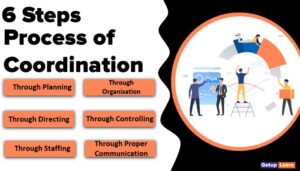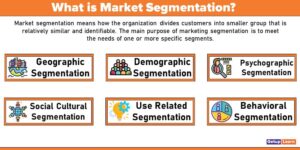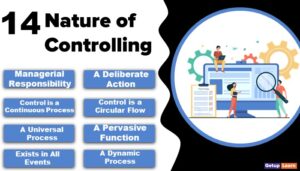Table of Contents
What is Target Market?
Market targeting is a process of identifying the target market from the total market. The target market contains a group/groups of customers to whom the firms want to satisfy or as per their desire, the companies manufacture the product or services, set prices, conduct promotional activities and the distribution network is made.
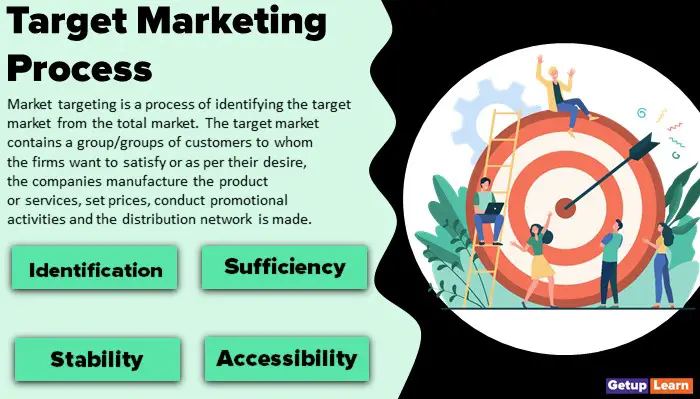
The target market is a set of buyers who have to share common needs or characteristics that the company decides to serve. After the firm has identified its market segment opportunities, it must decide how many and which buyers to target.
Market Targeting Strategies
Following are the market targeting strategies that can adopt by any firm:
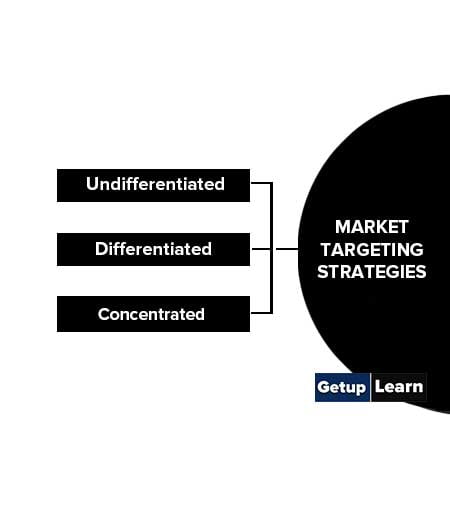
Undifferentiated Marketing
In this strategy, the whole market is considered to ignore the market segment. Here the firm will design a product and program that will appeal to the whole market. The focus is on the common needs of the whole market. Most modern marketers have doubts about this strategy.
Differentiated Marketing
In this strategy, the firm decides to target several markets and design separate offers for each. For example, Maruti Car Caters to every “purse, purpose and personality”. Most firms firm adopt differentiated marketing.
Concentrated Marketing
A concentrated marketing strategy goes after the large share of one or a few submarkets. This strategy is very appealing when the firm has limited resources. In a single segment, it can concentrate on understanding the needs, motives, and satisfactions of that segment’s members and on developing and maintaining a highly specialized marketing mix.
For example, the manufacturer of Rolex watches chose to concentrate on the luxury segment of the watch market.
Target Marketing Process
The next challenge for the marketer is to select one or more segments to target with an appropriate marketing mix. Following is the target marketing process:
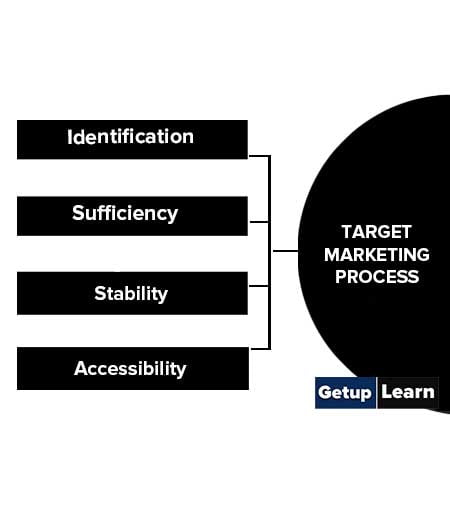
Identification
To divide the market into separate segments on the basis of a common need or characteristic that is relevant to the product or service, marketers must be able to identify the relevant characteristic. Some segmentation variables such as geography (location) or demographics (age, gender, occupation are relatively easy to identify or are even observable.
Others, such as education, income, or marital status, can be determined through questionnaires. Still, other characteristics, such as benefits sought or lifestyle, are more difficult to identify. The knowledge of consumer behavior is especially useful to marketers who use such intangible consumer characteristics as the basis for market segmentation.
Sufficiency
For a market segment to be a worldwide target, it must have a sufficient number of people to warrant tailoring a product or promotional campaign to its specific needs or interests to estimate the size of each segment under consideration, marketers often use secondary demographic data.
Stability
Most marketers prefer to target consumer segments that are relatively stable in terms of demographic and psychological factors and needs and that are likely to grow larger over time. They prefer to avoid “Fickle” segments that are unpredictable in embracing facts.
For example, teens are a sizeable and easily available market segment, eager to buy, able to spend, and easily reached. Yet, by the time a marketer produces merchandise for a popular teenage fad, interest in it may have been wanted.
Accessibility
The fourth requirement for effective targeting is accessibility, which means that marketers must be able to reach the market segments they want to target in an economical way.
Despite the wide availability of special interest magazines and cable TV programs, marketers are constantly looking for new media that will enable them to reach their target markets with a minimum of waste circulation and competition.
Approaches of Market Targeting
Once a firm understands its markets and the appropriate bases for segmenting those markets, it must choose an approach for selecting its target markets. There are three different approaches for selecting target markets:
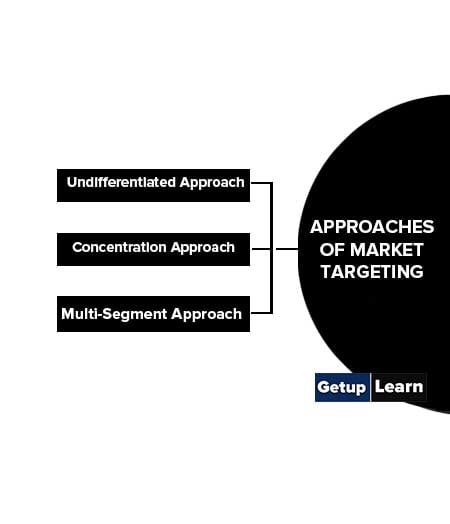
Undifferentiated Approach
In the undifferentiated (or total-market) approach, a company develops a single marketing mix and directs it to the entire market for a particular product. This approach is used when an organization defines the total market for a particular product as its target market.
A company using the undifferentiated approach assumes that individual customers in the target market for a specific type of product have similar needs. Therefore, the firm creates a single marketing mix that it hopes will satisfy most of those customers.
The company makes the type of product with little or no variation, sets one price, designs one promotional program aimed at everyone, and establishes one distribution system to reach all customers in the total market.
Products that can be marketed successfully with the undifferentiated approach include staple food items such as sugar and salt, certain kinds of farm produce, and other goods that most customers think of as identical to competing products.
Companies that use the undifferentiated approach often try to distinguish their own products from competitors’ products through marketing activities. When a company tries to convince consumers that its products are superior and preferable to competing brands, it is utilizing product differentiation.
Concentration Approach
When an organization directs its marketing efforts toward a single market segment through a single marketing mix, it is using a concentration approach. A major advantage of the concentration approach is that it allows a company to focus all its marketing efforts on a single segment.
The company can analyze the characteristics and needs of distinct customer groups and then direct all its efforts toward satisfying that group’s needs. A firm can generate a large volume of sales by reaching a single segment. The concentration approach also enables a firm with limited resources to compete with larger organizations, in the same market.
A major disadvantage of the concentration approach is that if a company depends on a single market segment for its sale and that segment’s demand for the product declines, the company’s sales and profits will also decline. Moreover, when a firm dominates one segment of a market, its popularity and reputation may keep it from moving into other segments.
Multi-Segment Approach
An organization using the multi-segment approach directs its marketing efforts at two or more segments by developing a marketing mix for each segment. A firm may use the multi-segment approach after successfully using the concentration approach on one market segment and expanding to other segments.
A business using the multi-segment approach can usually increase its sales in the total market by focusing on more than one segment because the firm’s mixes are reaching more people. A firm with excess production capacity may find the multi-segment approach practical because the development of products for additional market segments may use up the excess capacity.
However, production and marketing costs may be higher with the multi-segment approach because it often requires a great number of production processes, materials, and skills, as well as several different promotions, pricing, and distribution methods.
What are market targeting strategies?
Market targeting strategies are given below:
1. Undifferentiated Marketing
2. Differentiated Marketing
3. Concentrated Marketing.
What is the target marketing process?
Following are the steps of target marketing process:
1. Identification
2. Sufficiency
3. Stability
4. Accessibility.
What are the approaches of market targeting?
Approaches to market targeting are given below:
1. Undifferentiated Approach
2. Concentration Approach
3. Multi-Segment Approach.



